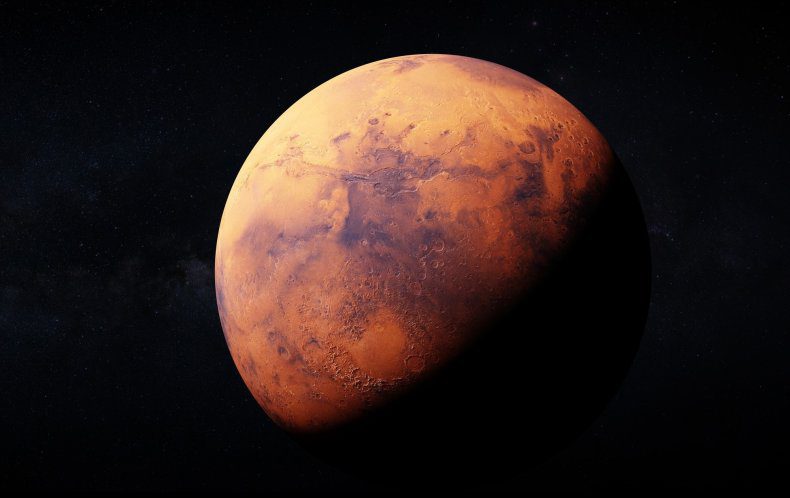Mars was once a far warmer and wetter world, with a dense, carbon-rich atmosphere that kept temperatures high and surface water liquid. Today, though, the planet clings to a tenuous atmosphere so thin that the pressure at its surface is less than 1% of that on Earth – a big change for a planet that was once far more similar to our own. What happened?
Mars is thought to have lost its once-thick atmosphere after the planet’s magnetic field switched off, causing its atmosphere to leak away to space. However, one theory suggests that mineral carbonation may have played a role, a process by which silicate minerals like olivine are turned into carbonates in the presence of water: a form of natural rock weathering! This also takes place on Earth and is the mechanism underpinning UNDO’s work in carbon removal, as it’s a highly effective way to draw carbon out of a planet’s atmosphere and lock it up within rock.
Natural rock weathering occurs as rain absorbs carbon dioxide from our atmosphere on its way to the ground, making it slightly acidic. The acidic rainwater then reacts with the rock it falls upon, breaking it down over time. As a result of this process, carbon dioxide is removed from our atmosphere and ends up locked up in rock pretty much permanently. (We speed up this process via enhanced rock weathering: we spread crushed basalt rock over agricultural land, increasing its surface area so it can react with rain more quickly and lock up more carbon.)
But did natural rock weathering play a role on early Mars, too? Mars has copious silicate minerals in its crust, and secondary stores of carbonates are also found there – findings that align well with the idea of carbonation at work. In 2013, scientists explored this possibility using Lafayette, a meteorite discovered in the US and recognised in 1931 to be of Martian origin. Lafayette formed on Mars over a billion years ago, offering a great snapshot of what the planet was once like.

The researchers, whose findings appeared in Nature Communications, used electron beam imaging and analysis of Lafayette to reveal that olivine and a kind of feldspar-rich volcanic residue had both been replaced by carbonate: in other words, the meteorite shows that mineral carbonation took place on ancient Mars. They found that carbon-dioxide-rich water flowed into Lafayette along veins of smectite (a clay mineral), enhancing olivine’s conversion to carbonate.
Excitingly, Lafayette formed during a phase of Martian history that was already experiencing a thinner atmosphere and less active water system, meaning that carbonation is likely to have been even more effective at capturing carbon dioxide even further back in Mars’ history. Even if the process played only a partial role in removing carbon from Mars’ atmosphere, the research highlights the potential of rock weathering as a means of carbon capture and removal.
There are promising signs for Mars in particular. Weathering can occur as rock interacts with not only rainwater but groundwater; Mars is known to have once had a groundwater system that spanned the entire planet, feeding hidden underground lakes and influencing the planet’s surface from below. Additionally, a map created last year using data from ESA’s Mars Express and NASA’s Mars Reconnaissance Orbiter traced the locations and amounts of hydrated minerals on Mars, revealing hundreds of thousands of mineral-rich outcrops. According to the scientists, while we once thought of such minerals as being oddities, “not seeing [them] is actually the oddity”, highlighting just how important water has been in shaping Mars throughout its history.
—
The research team was led by the Scottish Universities Environmental Research Centre, with co-authors based at the University of Glasgow and Natural History Museum, London: Tomkinson, T., Lee, M., Mark, D. et al. Sequestration of Martian CO2 by mineral carbonation. Nat Commun 4, 2662 (2013). https://doi.org/10.1038/ncomms3662
About the author:
Nicky Jenner is a science writer and editor based in Bristol. Her work has appeared editorially in publications including New Scientist, Nature and The Guardian; she has published a book on Mars, 4th Rock from the Sun, with Bloomsbury Publishing; and she has held diverse roles in communications, press, publishing and outreach, most recently at Imperial College London and providing comms services for the European Space Agency.

Talk to our expert team
Whether you're a business, individual, potential partner, or just have a question for one of our teams please reach out.


 " />
" />
